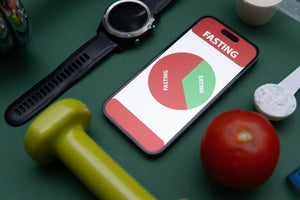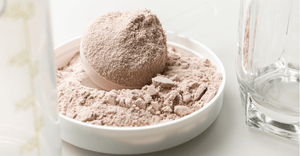Leg Day Workout: Full Routine And 8 Intensive Exercises
Training Your Legs The Right Way
Hitting legs is, without a doubt, one of the most intensive body parts to train. This is because the legs are a large muscle group that requires a lot of energy and attention.
That's why in programs such as PPL, Legs often get their own dedicated day, meaning on that day, you're only going to train legs.
On the first day, you have your push day. The next day, you're going to do your pull day. Then finally, you're going to hit legs.
By doing so, you can put all your focus on growing your legs without any distractions whatsoever.
Your leg workout should hit all the different muscle groups in the legs, meaning you must include the proper exercises with the right intensity.
In this article, we will not only show you the best leg exercises but also walk you through an optimal leg day routine so that you know exactly what to do.
The Top 8 Best Leg Exercises For Size
There are so many different leg exercises you can do, making it challenging to filter out which are the most effective.
To help you out and set you straight, we’re sharing 8 of the best leg exercises for building mass throughout your lower body. Add them to your leg day routine and see the results in no time.
1. Squats
Squats are the king of all leg exercises. They're the best movement for building big legs because they activate every muscle group in your legs.
This compound movement will activate your quads, hamstrings, and glutes. Performing squats will also help build a strong core, which is very beneficial.
But, what's important when doing this leg exercise, or any exercise for that matter, is that you perform it correctly.
If you are not using the proper form, you could injure your back, knees, and hips, putting you out of action for several weeks and, worst-case scenario, months.
To properly perform this exercise:
- Stand at a squatting station with your feet positioned roughly shoulder-width apart and your toes angled slightly outward.
- Duck beneath the weighted bar so that it rests across the back of your shoulders.
- Press up while keeping your back and neck as straight as possible, lifting the bar from the station.
- Bend your knees until your thighs are just about parallel to the floor so that your hip joints are lower than your knees.
- Slowly raise your body back up until you are in the starting posture.
- Tips: Keep your body and core tight throughout the entire movement. Get your form nailed down before you start adding weight to the bar.
Common Mistakes: You don't want your lower or upper back to round during this movement, as this may cause injuries. It's also important to go parallel when doing squats, so you must have good depth.
2. Leg Press
Next up, we have the leg press. The leg press is another highly effective movement to build tree trunk legs. It's relatively easy to do and doesn't require much coordination.
Like squats, the leg press is also considered a compound movement that's going to activate all the muscle groups in your legs.
If you perform this exercise the right way, it's going to fire up your quads, hamstrings, and glutes without putting excess strain on your spine. This is why some people prefer it over doing squats.
To properly perform this exercise:
- Sit in a leg press machine and place your feet onto the footplate. Your feet should be spread roughly hip-width apart.
- Unlock the safety lever and allow the weight to lower towards you until your knees are bent at roughly a 90-degree angle.
- With your back pressed firmly against the seat, exhale while you press the weight away until your legs are completely straight.
- Slowly lower the weight back down into the starting position and repeat.
- Tips: To make the exercise more challenging, you can try doing single-leg presses or elevated leg presses.
Common Mistakes: Do not let your knees cave in as you press the weight away from you. Also, avoid locking your knees at the top of the movement.
3. Hack Squats
Hack squats are also an excellent exercise for the legs. This exercise, like regular squats, also works the entire leg muscles, but this movement really emphasizes the quadriceps (quads).
What we like about hack squats is that you won't have to worry about stability, meaning you can put all your energy and focus on growing your legs.
Doing hack squats is also helpful to help improve your squat form, as it helps you increase your range of motion (ROM).
To properly perform this exercise:
- Stand on a linear press machine and recline with your back against the rest. Slide your shoulders under the shoulder pads and position your feet roughly shoulder-width apart. If there are handles in place, grip the handles with your elbows facing forward.
- Bend your knees and lower through your hips until your knees are at roughly a 90-degree angle.
- Keeping your back straight, press up through your heels to raise the weight back up into the starting position.
- Repeat for the desired number of repetitions.
- Tips: Be sure to lower your legs until they are slightly below parallel with the floor. This is where you'll experience the best results.
Common Mistakes: Do not round or arch your back as you bend your knees. Also, avoid caving your knees in as you lower down. This should be a clean motion that's controlled throughout your back and legs. If you are struggling to control the weight, you're lifting too heavy.
4. Leg Extension
If you're looking to put the focus on your quads, leg extensions are one of the best exercises for doing so. It's a machine-based exercise that's easy to perform yet gives a great mind-to-muscle connection with the quadriceps.
Especially when performed in the high rep range (12-15), you'll feel this exercise is perfect for hitting legs.
In our opinion, this isolation exercise is a must-have for your leg day workout, so make sure to try it out and include it.
To properly perform this exercise:
- Adjust the machine so that your knees are in line with the pivot point and your feet are placed under the padded lever.
- Choose a weight that you can comfortably manage and grip the handles, if available.
- Keeping your back straight, exhale as you extend your legs forward until they are straight.
- Pause for a count of two and then slowly lower the weight back down into its starting position.
- Repeat the motion for the desired number of repetitions.
- Tips: If you are new to this exercise, start with a lighter weight and increase the weight as you become more comfortable with the movement.
Common Mistakes: As with other seated leg exercises, try not to arch your back or rock your hips as you extend your legs. The motion should only extend throughout your leg, not your upper body. If you are straining your upper body to lift the weight, it's too heavy.
5. Leg Curl
Moving on, we have leg curls, another machine-based isolation exercise that helps target the hamstring muscles.
Performing leg curls during your workout will help build strong and flexible hamstrings. In our opinion, it's an exercise that has to be included if you want to train your legs optimally.
To properly perform this exercise:
- Adjust the length of the machine so that your knees are in line with the pivot point and the backs of your legs are placed under the padded levers.
- Adjust the weight to something you can comfortably manage and hold the handles, if available.
- With your back straight, curl your legs up towards your glutes while exhaling through the motion.
- Take a second or two to pause, and then slowly lower the weight back down until you are in the starting position again.
- Repeat the exercise for the desired number of repetitions.
- Tips: This motion can feel awkward if you're new to the exercise. Start with a lighter weight and increase over time as you become more comfortable with the movement.
Common Mistakes: Because you are lying face down, you're less likely to arch your back through the motion but be careful to avoid lifting too heavy. Master the form before increasing the weight.
6. Romanian Deadlifts
The Romanian Deadlift (RDL) is a weightlifting exercise that targets the posterior chain muscles of the legs, including the gluteus maximus, hamstrings, and adductors.
The RDL is a variation of the conventional deadlift and is an accessory exercise that you should include in your leg workout.
You can use a variety of barbells, dumbbells, or even kettlebells to perform the exercise, but we'll stick with a barbell.
To properly perform this exercise:
- Start with your feet spread roughly hip-width apart and a slight bend in your knees.
- Hold a barbell in front of your thighs with an overhand grip, and your hands spread as wide as your feet.
- While holding your back straight, engage your core muscles and bend at your hips until the barbell has lowered down towards your shins. Continue to extend until your back is at a 45-degree angle.
- From here, raise your hips and squeeze your glutes to raise the barbell back up to the starting posture.
- Repeat the exercise for the desired number of repetitions.
- Tips: Start this exercise lightly and increase the weight as you become more comfortable with the movement.
Common Mistakes: Because this exercise puts your back at a bit of an angle, it's easy to round your back as you lower the weight down. This puts unnecessary strain on your spine and could lead to injury. Instead, keep your back straight, and your core engaged throughout the movement.
7. Lunges
Lunges are a simple yet highly effective exercise that works your quads, hamstrings, and glutes.
It's a challenging movement that will undoubtedly help grow your legs. You can do this exercise with or without weight, but we recommend using weight to make the exercise more challenging.
It's also good to know that lunges can be performed with dumbbells, barbells, or kettlebells - whichever has your preference.
To properly perform this exercise:
- Start by standing with your feet together and your hands down by your sides.
- Step forward with one leg and lower your body towards the floor by bending both knees.
- Your front knee should be at roughly a 90-degree angle, and your back knee should be close to the floor but not resting on it.
- From here, push off your front leg and return to the starting position as if you were taking a step.
- Repeat the exercise with your other leg.
- Tips: To make this exercise more challenging, try holding dumbbells in each hand or holding a barbell across your shoulders. You can also move forward through the exercise to make it more dynamic.
Common Mistakes: Avoid leaning too far forward, as this can cause you to lose your balance. Remember to keep your back straight throughout the entire exercise.
8. Standing Calf Raises
The last exercise we're featuring is the standing calf raise. As you can already tell, it's a movement that focuses directly on the calve muscles.
Some of you will have access to a calf raise machine, but you can also do it with free weights; you just have to be creative.
If you're training legs, don't forget to include at least one exercise in there that works the calves. Preferably a movement like the calf raises to hit the muscle from an optimal angle.
To properly perform this exercise:
- Get positioned on an exercise step or a weight plate to create a full range of motion for this movement.
- Stand with your feet placed together, and have the ball of your foot rest on the edge of the exercise step or weight plate.
- Hold your hands down by your sides. You may hold a dumbbell in each hand for additional weight.
- Proceed to raise your body up onto your toes.
- Lower your body back down into the starting posture.
- Tips: As with lunges, you can also move forward through the exercise to make it more dynamic.
Common Mistakes: Keep your knees as stable as possible when performing calf raises. If you shake or cave in your knees, it can cause you to lose your balance.
Leg Day Workout Routine Example
Now that you've got a good idea of which exercises to use on leg day, we'll share an example of one of our leg day routines.
We recommend incorporating between 4 to 6 exercises to round out your leg day. As in the routine we're about to show you; you must include both compound and isolation movements.
Take a look at the routine and give it a try for your next leg workout.
- Squats – We start heavy and hard with three sets of weighted squats. Each set should have at least 6 reps; if you can perform more, it's time to increase the weight.
- Hack Squats – After finishing three sets of standard squats, we move on to hack squats. Here, we do another 3 sets with between 8 and 12 reps.
- Leg Extensions – After warming up our legs with squats, we begin to isolate individual muscle groups, starting with 4 sets of leg extensions. Each set should have at least 12 repetitions, so be sure to use a weight you can manage.
- Leg Curls – We then continue to isolate individual muscle groups with 4 more sets of leg curls. Shoot for between 12 to 15 reps with a challenging weight.
- Standing Calf Raises – We finish the routine by working the calf muscles. We complete 5 sets with a heavy but manageable weight, aiming to complete between 15 and 20 reps in each set.
Rest about 60 to 120 seconds between sets, depending on which exercise you're doing. Squats, for example, are much more draining than a set of leg curls. Make sure to keep the intensity high!
It's very important that you maintain good form during any of these exercises. Make sure you are getting the full range of motion to stimulate the leg muscles optimally. Prioritize your form before increasing the weight.
Before Starting Your Leg Workout
Your leg muscles make up the entire lower section of your body and are responsible for supporting you while you move.
Before jumping straight into a leg workout, make sure you read these tips and check them off as you go through the routine. They're going to positively help impact your leg routine.
Eat Before You Train
A heavy leg day workout can require a lot of energy. Therefore, it's important you go into the workout with enough power.
You can get that power by eating a good pre workout meal, something that's high in carbohydrates. For example, rice or oats would be an excellent option.
Eat this meal about an hour before hitting the weights, and you'll notice a significant difference in performance.
Besides that, it's important to stay hydrated. You're going to sweat a lot during a leg workout, so make sure you drink enough water during the training.
You can also choose to drink an intra workout, as this will help replenish your electrolytes and boost performance.
Form Over Weight
No one likes to look weak in the gym, especially if you're surrounded by guys who can squat hundreds of pounds. While you may be tempted to throw a heavy weight onto the machine or barbell, think again.
Proper form is always more important than weight, no matter how much you can lift. The key is to first nail down your form, then start increasing the weight.
We're not telling you to leave the heavy weights - no, not at all. It's good to lift heavy, as long as you aren't using bad form.
Lifting too heavy with bad form can lead to serious injuries, so make sure you're using the proper form before adding more weight.
Your movements should be controlled and steady so that you're not buckling your knees, twisting through your waist, or arching your back as you bend down.
If you cannot manage the weight with control, you need to go lighter and perfect your technique.
Keep The Intensity High
When you're doing leg exercises, it's important that you keep the intensity high. This means that you should be working at close to or at your maximum capacity. If you are not keeping your heart rate up and your muscles engaged, you won't experience the full benefit of an intense workout.
The best way to maintain the intensity is by using a weight that fatigues your muscles. Challenge yourself by increasing the weight - while maintaining good form, of course.
It's also important to avoid taking long breaks between sets. Depending on the type of exercise you're doing, you'll want to keep around 30 to 90 seconds of rest between each set.
For compound movements like Squats, you can take a little longer. This will keep your muscles engaged and encourage muscular hypertrophy.
Frequently Asked Questions
We get a lot of questions regarding legs and training them - here's a list of the most frequently asked questions we get!
How many leg exercises should I do per workout?
We recommend developing an effective leg day routine using 4 to 6 exercises. This will vary depending on your experience, though.
If you've been lifting for quite a while, your legs will probably be able to handle more volume. But, if you're new to leg day, don't push yourself past 4 exercises. Focus on form and build up to a harder routine.
How long should your leg workout be?
An effective leg workout should usually take between 60 to 90 minutes to complete. This will all depend on the number of exercises you complete, as well as the number of sets and reps you do for each exercise.
The important thing to remember is that intensity and form matter more than weight and duration. Do your best, and you’ll see the results.
How many calories does a leg workout burn?
It really all depends on the exercises, sets, reps, and intensity of your workout. Keep in mind, though, that your legs are some of the largest muscle groups in your body.
If you complete an effective leg workout that lasts at least an hour, you could burn between 300 to 600 calories. If you're aiming for weight loss, keep the intensity high and power through the exercises.
What should i eat before my leg workout?
Your body needs energy to power through an intense leg day routine, so be sure to eat plenty of carbohydrates before a workout.
Something quick and easy that you can prepare in the morning, such as oats or rice with some fruit, will make for an excellent pre-leg day fuel. Avoid overly processed foods.
Conclusion
Now that you know how to properly train your legs, it's time to put these tips into action. Remember to focus on form and intensity to get the most out of your workout.
Make sure you're eating a balanced diet and getting enough rest to help your muscles recover.
As we pointed out earlier, your leg day routine should consist of 4 to 6 powerful exercises that consist of both compound and isolation movements.
If you're new to leg exercises, go slow, and you'll eventually build up to a more complicated workout. Feel free to experiment with a variety of the exercises shared above and play around with our example routine.
Don't worry if you've let your legs fall behind. The idea is to progressively build towards a stronger lower body that can keep up with your chest, arms, and shoulders.
With these tips, you'll be on your way to developing a strong and powerful lower body in no time.













Leave a comment